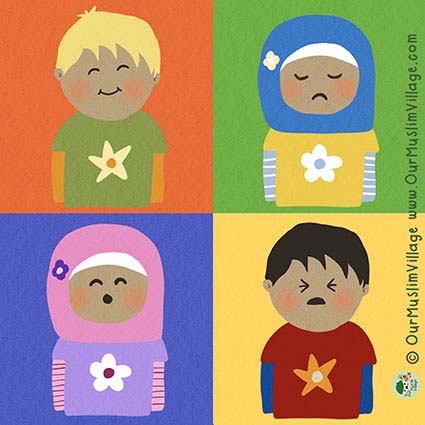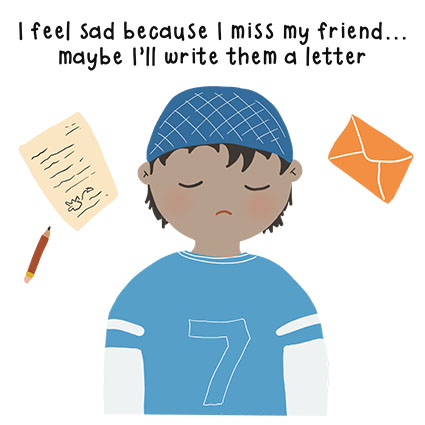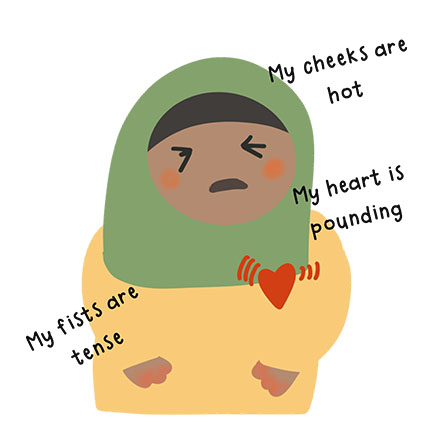Showing Your Child How To Identify & Name Their Emotions

Being able to recognise and manage our emotions is a key skill that research has found leads to improved wellbeing, enhanced relationships, and increased academic performance. It is also essential in our spiritual development as Muslims as being able to manage our feelings is integral in learning to control our nafs and strengthen skills such as delayed gratification.
Children do not instinctively know how to regulate their emotions. Rather they rely on their caregivers to firstly do this for them as babies, before they learn how to do this for themselves. It is essential that we teach our children (of any age) how to recognise and manage their emotions. It is never too late to start!
All emotions are valid and can be understood as messengers that are trying to communicate something to us. No emotion is ‘bad’ and a child should be taught how to articulate and manage their emotions rather than suppress them which will only lead to further problems. However before we can expect our child to manage their emotions effectively we ideally need to be able to do this for ourselves. Not all adults have the skills to manage their own emotions, but they can be learnt at any age. However the rest of this particular article is based on the premise that you can identify and regulate your own emotions InShaAllah.

Model Identifying & Naming Your Own Emotions

Children learn from observing others so an effective way to begin teaching your child is to model how you yourself identify your emotions. It may take practice, and may not all be in one sentence, but aim to:
👉 Name the emotion
👉 Name the reason that caused the emotional response (if possible)
👉 Name how you will manage the emotion (especially with ‘negative’ emotions)
eg I’m feeling a bit angry at the moment because that man said something rude to me, so I’m just going to go and sit down for 5 mins
eg I’m really excited as we are seeing your grandparents tomorrow, let’s have a party.

Emotions are experienced in the body and tuning into bodily sensations is crucial to learning how to identify and manage emotions effectively. It will help your child learn if you express how the emotion feels in your body
👉 Name the physical bodily sensations
eg i’m feeling angry and my heart is pounding and my face feels all ho
eg I’m worried and my hands feel sweaty and my legs are shaking
